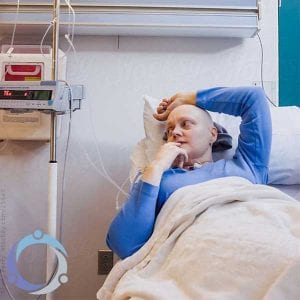Chemotherapy may spread cancer and trigger more aggressive tumours, warn scientists
 Chemotherapy could allow cancer to spread, and trigger more aggressive tumours, a new study suggests.
Chemotherapy could allow cancer to spread, and trigger more aggressive tumours, a new study suggests.
Researchers in the US studied the impact of drugs on patients with breast cancer and found medication increases the chance of cancer cells migrating to other parts of the body, where they are almost always lethal.
Around 55,000 women are diagnosed with breast cancer in Britain every year and 11,000 will die from their illness.
Many are given chemotherapy before surgery, but the new research suggests that, although it shrinks tumors in the short term, it could trigger the spread of cancer cells around the body.
It is thought the toxic medication switches on a repair mechanism in the body which ultimately allows tumors to grow back stronger. It also increases the number of ‘doorways’ on blood vessels which allow cancer to spread throughout the body.

CREDIT: GEORGE KARAGIANNIS
Dr George Karagiannis, of the Albert Einstein College of Medicine of Yeshiva University, New York, found the number of doorways was increased in 20 patients receiving two common chemotherapy drugs.
He also discovered that in mice, breast cancer chemotherapy increased the number of cancer cells circulating the body and in the lungs.
Dr Karagiannis said women could be monitored during chemotherapy to check if cancer was starting to circulate and doorways were emerging.
“One approach would be to obtain a small amount of tumour tissue after a few doses of preoperative chemotherapy,” he said.
“If we observe that the markers scores are increased we would recommend discontinuing chemo and having surgery first, followed by post-operative chemo. We are currently planning more extensive trials to address the issue.
“In this study we only investigated chemotherapy-induced cancer cell dissemination in breast cancer. We are currently working on other types of cancer to see if similar effects are elicited.”
The study was published in the journal Science Translational Medicine.
breakthroughs
A history of discoveries that have brought us closer to curing cancer
-
1923
Radiotherapy first used to treat cervical cancer.
-
1935
First link made between sun and skin cancer.
-
1954
Proof of a link between smoking and lung cancer first published.
-
1956
First chemotherapy drug, methotrexate, used to treat a rare tumor called choriocarcinoma.
-
1963
Discovery of the first human cancer virus.
-
1972
First drug for testicular cancer developed, now 95 per cent of men with it survive.
-
1986
The first ‘monoclonal antibody’ or targeted therapy approved by the Federal Drug Administration (later examples include Herceptin for breast cancer and Avastin for colorectal, lung and othercancers).
-
1994-95
The first breast cancer genes BRAC-1 and BRAC-2 discovered.
-
2008
The cervical cancer vaccine immunisation programme begins in the UK.
-
2010
Trials show ‘flexi-scope’ screening could prevent a third of bowel cancers.
-
2011
International Cancer Genome Consortium formed to map the genetic faults behind 50 types of cancer.
-
2013
Trial finds taking the drug anastrazole daily could halve the risk of breast cancer in high risk older women.
-
2016
Scientists build nanoparticles that act as ‘Trojan Horse’ vessels that ferry chemotherapy drugs direct to cancers. Two breast cancer drugs are shown to shrink or eliminate tumours in 11 days. Professor Swanton’s research shows how our own immune cells can be used to cure ‘hopeless case’ secondary or metastasised cancers.